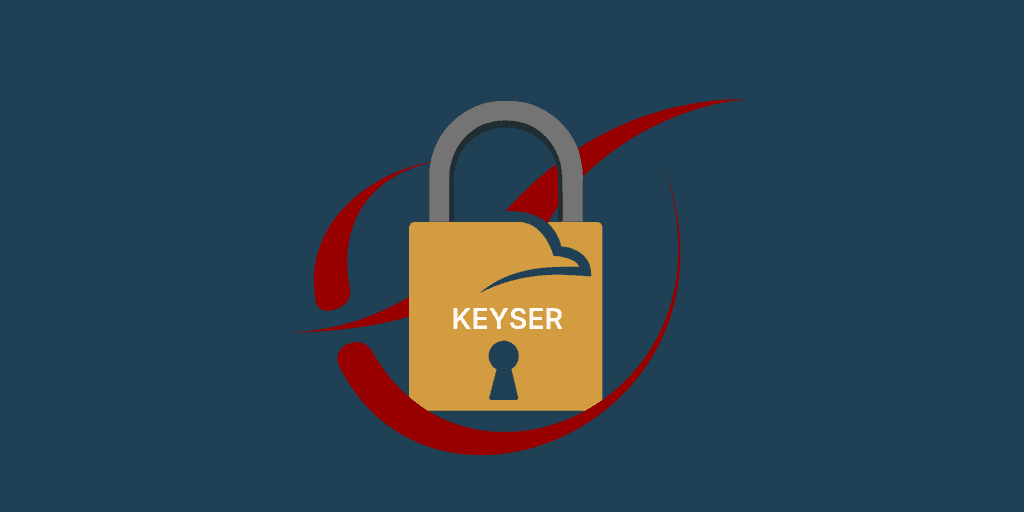
Keyser, single bash script for SSL certificates management
Jun 25, 2025
Never miss our publications about Open Source, big data and distributed systems, low frequency of one email every two months.
Keyser is a command-line utility designed to streamline the creation, management, and protection of SSL certificates with security and efficiency. Distributed as a single Bash script, it provides developers and system administrators with a lightweight yet powerful tool to generate certificate authorities, intermediate chains, and signed certificates — with optional GPG encryption for enhanced security.
Keyser stands out by being self-contained, documented, and testable. It eliminates the need for external tools or dependencies, and is particularly valuable in environments where transparency and minimalism matter.
It is written as a single bash script file and uses OpenSSL present on your system.
Why Keyser?
Certificate lifecycle management often involves complex tools or heavyweight PKI platforms. In contrast, Keyser is lightweight, scriptable, and easy to audit — making it suitable for development, testing, and even production when transparence and reproducibility are essential.
With keyser, some mechanisms are now straightforward:
- Initialize a local certificate authority
- Create intermediate and leaf certificates
- Use GPG to encrypt certificate keys
- Store, list, and inspect their certificates
- Version control the vault directory when encrypted with GPG
Keyser is aimed at:
- System administrators seeking a portable SSL tool
- Developers needing quick and repeatable certificate generation
- Security professionals preferring transparent, file-based solutions
A basic understanding of the OpenSSL and GPG command-line tools is recommended but not necessary.
Features
- Generate self-signed root and intermediate certificates
- Create and sign leaf certificates
- Encrypt certificate keys using GPG
- Store and organize certificates by domain in a vault directory
- Inspect and export certificate metadata
- Fully documented and covered by test cases
Installation
Keyser is a single Bash file and can be installed without external dependencies. It stores and manages certificates inside a vault directory.
The latest version is downloaded from the GitHub repository:
curl -L -o ~/.keyser/bin/keyser https://bit.ly/adaltas-keyser
chmod +x ~/.keyser/bin/keyserThe binary is added to the path.
echo 'PATH="$PATH:$HOME/.keyser/bin"' >> ~/.profile
source ~/.profileOptionaly, the vault directory is set to a different location.
echo "export KEYSER_VAULT_DIR=~/.keyser/vault" >> ~/.profileTo enable optional GPG encryption for private keys, a passphrase can be exported.
echo "export KEYSER_GPG_PASSPHRASE=<change_this_secret>" >> ~/.profileThe variable is left unset or empty to disable encryption.
Keyser is now successfully installed.
# Help
keyser
# Current version
keyser versionUsage
The keyser command list all the available commands. Use keyser to print the help of an individual command.
This following section focuses on:
- generating a certificate authority
- generating a certificate for a intermediate domain
- generating wildcard certificated for subdomains
For illustration purpose, the following names are used:
- MyAuthority is the name for our certificate authority
- example.test is the intermediate domain name
- www.example.test is a subdomain of example.test
A new certificate vault is initialized. The init command creates the base directory structure.
keyser initWhen using GPG encryption, certificates keys are encrypted and the vault directory may be version controlled with a tool like Git.
Certificate authority (CA)
keyser cacert \
-c FR \
-e no-reply@test \
-l "Local test environment" \
-o MyAuthority \
testThe following flags are used:
-c: Country of the issuer-e: Email of the issuer-o: Organization of the issuer-l: Location of the issuertesthere)
Certificate authority information is obtained with the cacert_view command.
# Certificate content
keyser cacert_view test
# Subject information
keyser cacert_view -s test
# Text and fingerprint information
keyser cacert_view -t testIntermediate domain certificate
An intermediate domain certificate is created.
keyser cert -i \
-e no-reply@test \
example.testThe cert_list command list all the registered certificate.
keyser cert_listWildcard certificate
This command creates a wildcard certificate for the subdomains of your domain. The -d option indicates the certificate Subject Alternative Name (SAN). It is required to enable certificate recognition by web browsers.
keyser cert \
-d '*.example.test' \
'*.example.test'The certificates are exported to your location.
keyser cert_export -c \
'*.example.test' ~/.certsFiles ca.crt, cert.pem,key.pem, and sign.cnf are created inside the exported directory.
ls ~/vault/test.example.\*
ca.crt cert.pem key.pem sign.cnfIntermediate certificates help isolate your root CA. The main advantage of an intermediate certificate is to allow for hierarchical trust delegation, enabling organizations to manage and issue certificates for their services while maintaining a chain of trust to a root Certificate Authority (CA) without exposing the root CA’s private key. Refer to the documentation for more information.
Security model
Keyser supports optional GPG encryption for private key material. When the KEYSER_GPG_PASSPHRASE environment variable is set, all newly generated keys are encrypted at rest. This helps protect against unauthorized local access in multi-user or shared environments.
Contributing
Keyser is open source and hosted on GitHub. Contributions are welcome.
Before submitting a pull request, ensure your code is documented and covered by test cases.
Conclusion
Keyser offers a straightforward yet powerful approach to SSL certificate management. Its minimalistic design, combined with strong security features like optional GPG encryption, makes it a perfect solution for developers, system administrators, and security professionals. Whether you are working in development, testing, or production environments, Keyser ensures that managing SSL certificates is efficient, secure and understandable.